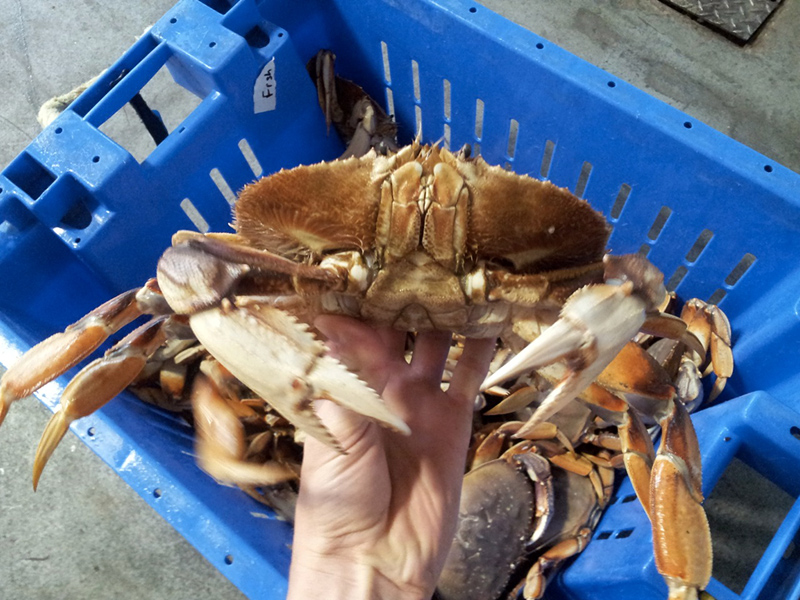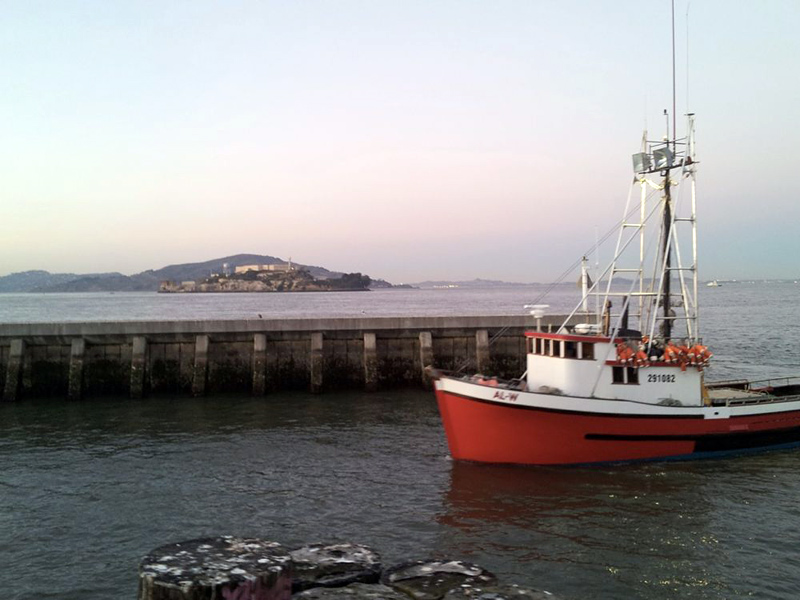Crab season has started in San Francisco. Crab fisherman are shown on the dock at Fisherman's Wharf bringing in their catch of massive amounts of crab. Vendors near the wharf serve and prepare crab. Video: Jonathan Morris, Video Editing: Peter Borg.
Last year something was missing from Thanksgiving festivities in the Bay Area--Dungeness crab. Crabbers were on strike, holding out for $2.50 a pound from buyers. Finally, they settled at $2.25 a pound, but the well-loved crustaceans did not arrive in time for Thanksgiving. Fortunately, that was not the case this year. A price was agreed upon, $3.00 a pound and crabbers hit the high seas; these tasty creatures are now showing up in grocery stores at prices that range from $5.99-$8.99 a pound and in restaurants with a wide range of dishes and price points.

Rocky Burns used to skipper the fishing vessel AL-W for the Dungeness season and now works at the online sustainable seafood company i love blue sea. He explained that the Dungeness crab fishery is sustainable due to three main components, or the 3 S’s as he calls them: Sex, Size, Season. “We throw back all females, and any males under 6 1/4 inches wide so they can reproduce,” he said. “As well, Dungeness shed their shells, or molt, at different times of the year, and which makes them delicate and susceptible to injury, so we don’t fish them during molting season.”

Rocky explained that another element that makes them sustainable is they are caught with baited traps. These are designed to let smaller crabs and bycatch escape unharmed. Bycatch are other creatures that make their way into the traps that are not the intended catch.
So you can feel good about that Crab Louie that you are enjoying; fishermen are getting a fair price and while they are expecting a light season catch-wise, the crabs are coming in large and healthy right now. Yet there is danger lurking on the horizon for these delicious creatures. While the crabs are caught between 3-40 miles offshore, they spend a great deal of their lives in estuaries. Juvenile Dungeness crabs lose their shells as they grow, this process of molting helps them to grow new, larger shells. During these periods, they head into the San Francisco Bay for protection. They hide out in the eel grass and eat fish, mollusks, and other crustaceans before heading out to the deep waters. At times they even seek protection in clamshells.